Chief financial officers increasingly are called on to be operational experts, strategic partners to the CEO and the voice of the investors in their organizations. The most sophisticated serve as a driving force for the commercial performance of the business and proactively provide the analysis and insight that help frame the company’s most important decisions.
On the operational front, CFOs increasingly serve as quasi-COOs, working with each business to help optimize pricing and define P&L investment plans. They sometimes help the CEO by stepping into the “bad cop” role to hold leaders accountable for performance targets. CFOs also collaborate with the CEO on the medium- and long-term planning required to answer the question: How do we position our company relative to competitors five years from now? Finally, the rise of investor activism has heightened boards’ anxiety about investor relations, which has CEOs and boards prioritizing capital market savvy and IR experience when selecting new CFOs.
All of this is a tall order, requiring a diverse set of leadership capabilities and finance and business experience.
To understand how the profiles of CFOs are changing in response to the demands of the role, Spencer Stuart’s annual CFO Index analyzed the turnover, tenure and backgrounds of the CFOs of Fortune 500 companies for the 11-year period from 2006 to 2016.
CFO route up
CFOs are both more likely to be promoted from within than in the past and, when hired from outside the company, more likely to have prior experience as a CFO.
Sixty-nine percent of Fortune 500 CFOs in 2016 were internal successors, building on the longer-term trend toward grooming internal successors. In the 11 years from 2006 to 2016, 61% of the 805 CFO transitions went to internal candidates. Companies with a deep bench of finance talent tend to develop their top performers by rotation through diverse finance assignments and board exposure. They are bringing potential successors into the boardroom earlier and more often to interact with the directors. Ideally, organizations also are exposing potential successors to investors and the analyst community, which is critical experience in light of the growing focus on investor relations skill.
When organizations do look outside the company for their next CFO, they are more likely to insist on a proven CFO. In 2016, 65% of externally hired CFOs — compared with 25% of all CFOs — had prior public company CFO experience. Another 9% of external hires and 6% of all CFOs had previously served as CFO of a private company. For the most part, organizations are largely staying within their own industry when selecting a new CFO; just 14% of CFOs came from a different industry.
New CFOs today tend to come to the role with a few more years of work experience than in the past: The average age of the new CFO “class of 2016” was 50.7, compared with 46.2 years for the class of 2006.
CFOs with prior CFO experience — 2016
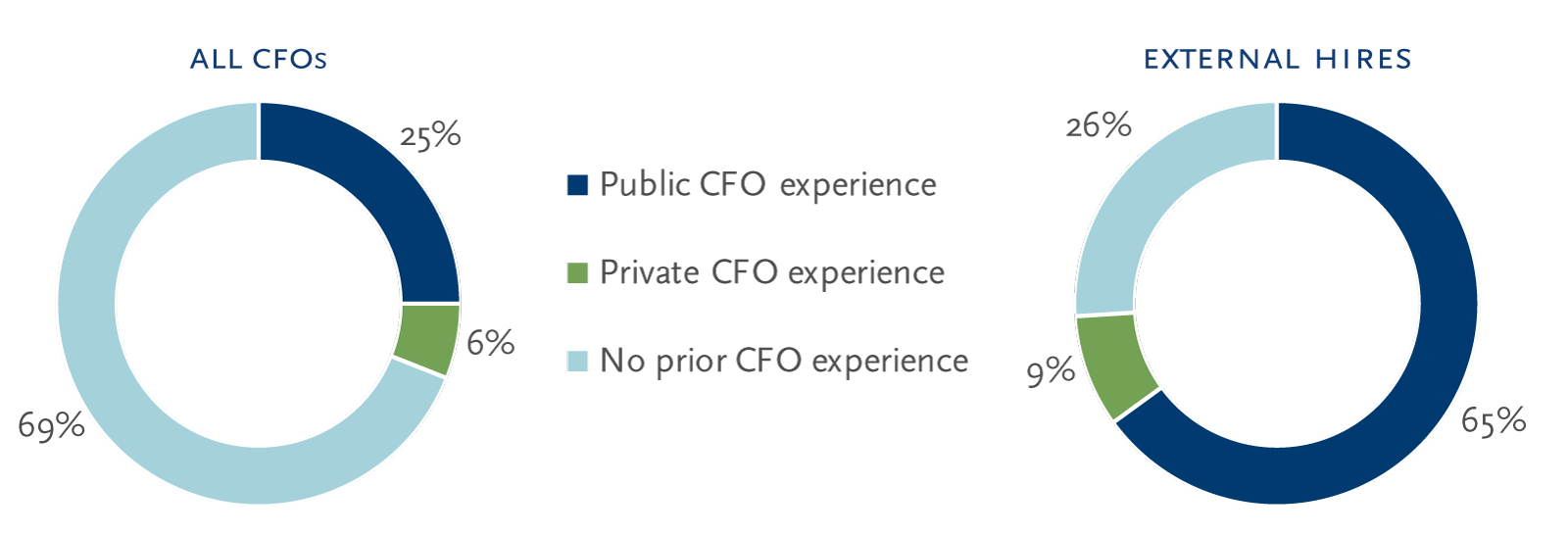
The most common primary routes up to the CFO role are controllership (22%), divisional finance (22%) and treasury (13%). We also are seeing an increase in investor relations, investment banking and corporate development as routes to the CFO role. The route up represents the function or discipline where CFOs spent the longest amount of time in their careers.
2016 route up
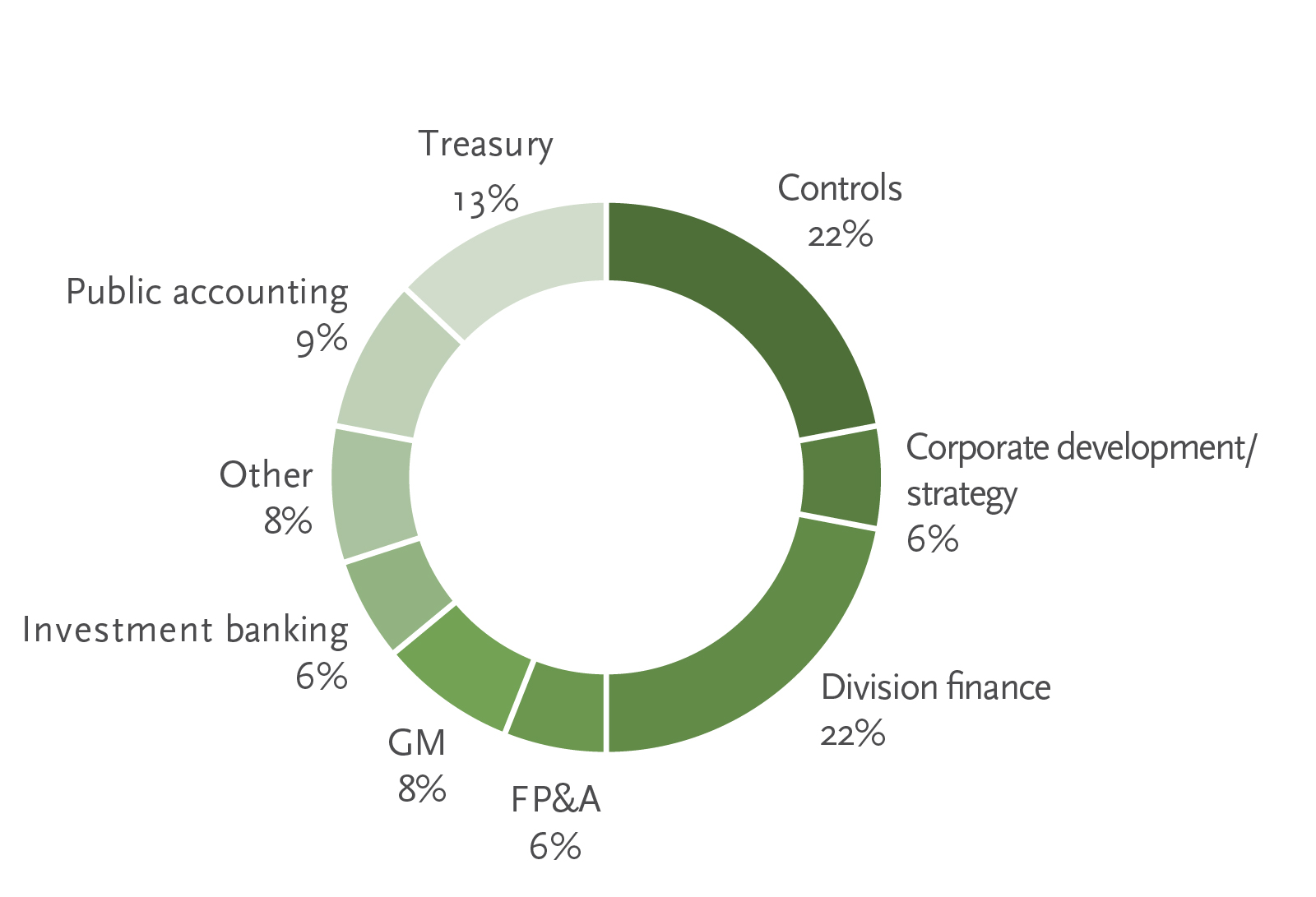
When looking at the last roles CFOs held before becoming CFO, divisional finance, controller, CFO and treasurer positions were the most common.
CFO demographics and diversity
Women now represents slightly less than 13% of Fortune 500 CFOs. While still low, this represents a meaningful increase in female representation since 2006, when 6.8% of CFOs were women. Similarly, the representation of ethnically diverse CFOs has doubled since 2006 to 6.4%. Progress may accelerate in the future as many organizations are focused on building a more diverse talent bench for the CFO role in the future, for example, by prioritizing female and diverse candidates for the CFO’s direct reports. We already have observed that the “bench” of up-and-coming leaders is more diverse, ensuring more diversity in the leadership ranks in the future.
CFOs in the Fortune 500
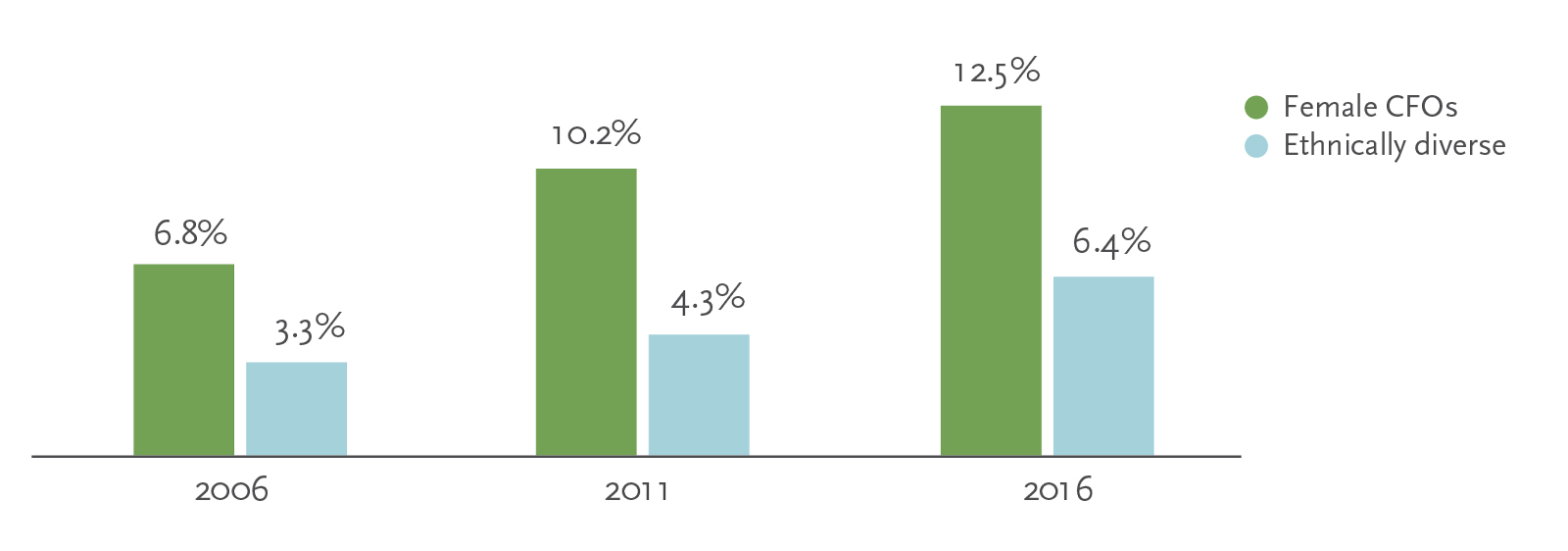
Turnover
Consistent with the previous two years, 14% of Fortune 500 CFO positions turned over in 2016. The Fortune 500 saw the highest annual CFO turnover in 2008, when 19% of CFO positions changed hands.
Fortune 500 CFO turnover 2006-2016
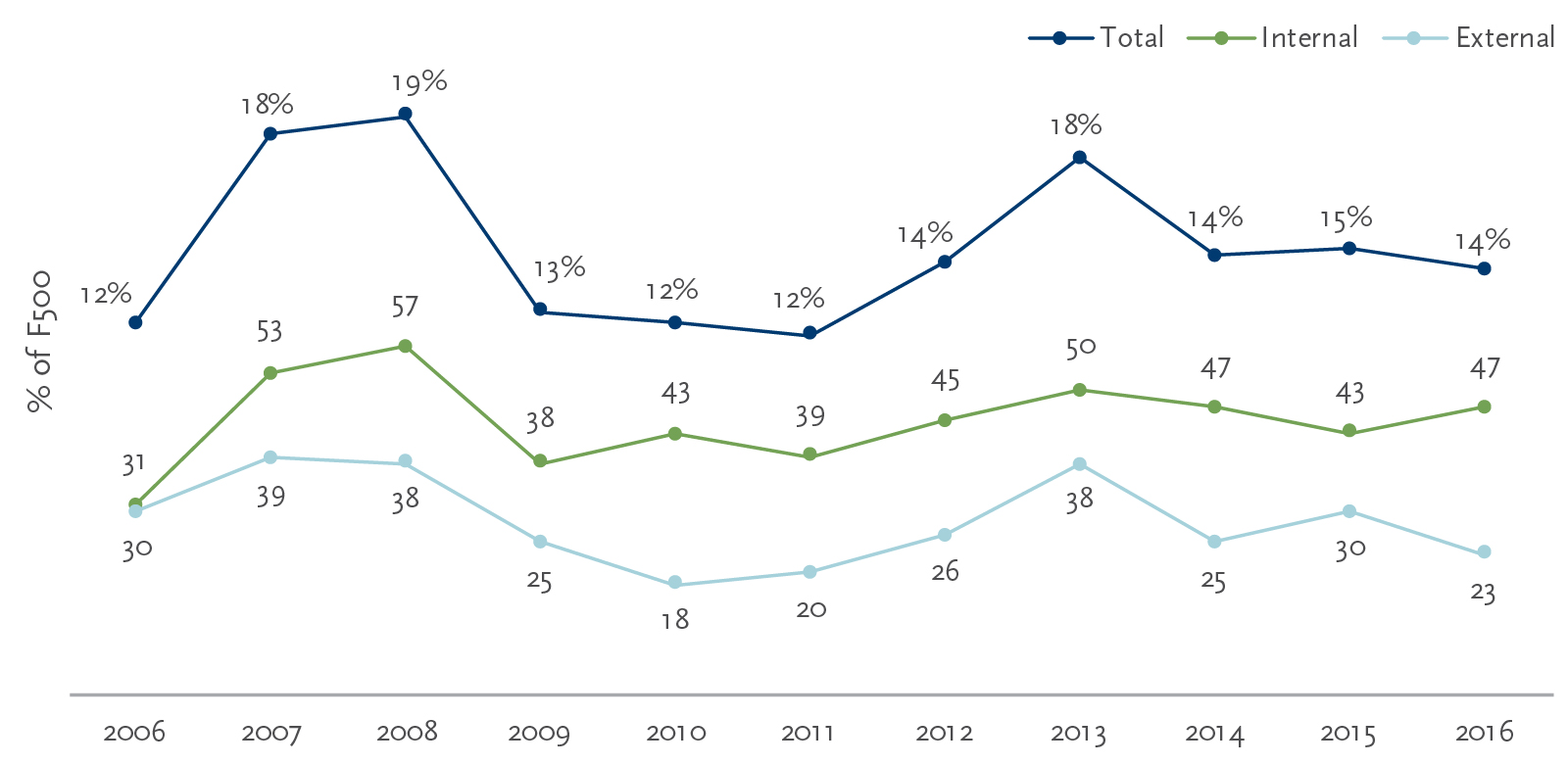
Meanwhile, average CFO tenure has remained relatively flat over the years, ranging from a low of 5 years in 2009 to 6 years in 2012. It was 5.7 years in 2016. Half of Fortune 500 CFOs have been in the role two to five years; the longest serving CFO has been in the role for 33 years.
Average CFO tenure 2016

CFO retirement and board service
More recently, we have been seeing a trend toward earlier CFO retirements among Fortune 500 companies. The average retirement age in 2016 was 58.2, a decline from 59.8 in 2015 and down from a recent peak of 60.6 in 2011. We suspect the earlier retirements are being driven by a combination of the growing demands of the CFO role, recent wealth creation and a rise in the number of opportunities for CFOs to serve on outside boards.
Sitting CEOs serve on fewer outside boards today than in the past, a decline that began with the passage of the Sarbanes-Oxley Act. This has created an opening for current and retired CFOs, particularly for boards looking for financial experts for the audit committee.
CFO board experience
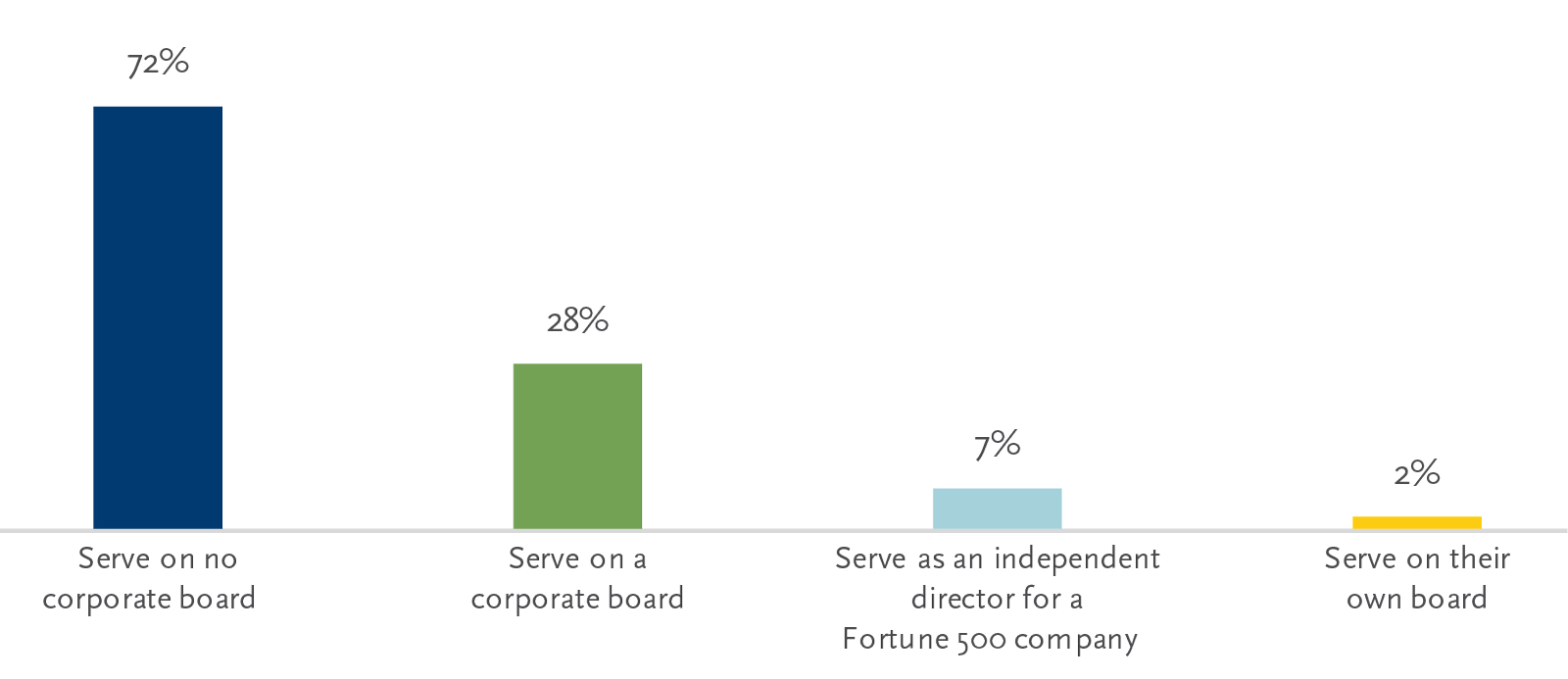
More public company CFOs approaching retirement are invited to join boards. When they retire from the CFO role, they may take on several board assignments, allowing them to continue to contribute and remain professionally challenged without the pressures and demands of the CFO role.
Although 28% of sitting CFOs sit on a corporate board — which could include their own company’s board — only 7% serve on an outside Fortune 500 company board. Only 13% of first-year CFOs in 2016 serve on a corporate board.
***
The Spencer Stuart Fortune 500 CFO Index is an analysis of the CFOs at Fortune 500
companies for the 11 year period from 2006-2016. The data for each year represents a
snapshot of executives sitting in the CFO seat as of December 31 of their respective year.